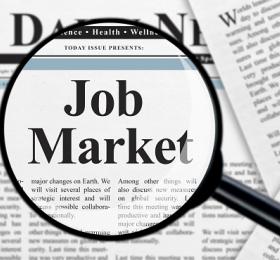
January 10, 2025
Arctic blast? Not in Laborland! The US economy added 256,000 jobs in December, though November payrolls were revised lower by 15,000. Labor force participation held steady at 62.5% last month as the official unemployment rate dipped to 4.1%. Meanwhile, U6 came in at 7.5%. Where were the employment hotspots in December? Healthcare, retail and leisure and hospitality. Hourly earnings increased 0.3% MoM, and November JOLTS bounced above 8M yet again. Overall, this is a rather “warm” report. Markets are recalibrating near-term expectations for further accommodation from the Federal Reserve by pushing rate cut expectations into the second half of the year. Let’s keep in mind that the Q4 ’24 job creation run rate is ~168,000 per month. This suggests the labor market isn’t hot enough to force Mr. Powell’s hand in the opposite direction, but let’s pay close attention to the inflation data over the next couple of weeks.
As expected, December brought another rate cut from the Federal Reserve. For those keeping track at home, effective fed funds now stand at 4.33%. We ended the year a full percentage point lower than where we were at the end of the summer months. Meanwhile, 10-yr and 30-yr US treasuries have jumped to ~4.75% and nearly 5% as of this writing. Investment grade spreads in corporate America remain tight, indicating confidence in the profitability of American businesses. However, confidence among consumers in Mr. Powell’s ability to return inflation to 2% is on the decline. Preliminary surveys, a la the University of Michigan, indicate US households see inflation running at 3.3% annually for the next 5 years. This brings expectations back to where they were before the Fed began cutting rates.
The inflation situation is a murky one and global growth isn’t what it used to be—particularly in the developed world. The US has become the last growth engine firing from a macroeconomic perspective. Oil told a bit of the macro story in the back half of ’24 with OPEC resisting calls to bring barrels back to the market as demand forecasts plummeted. However, “black gold” has retraced nearly all of its losses from the previous 6 months and is now trading at ~$76/ bbl. Perhaps the bigger story in the oil patch is natural gas. Gone is the $2 handle, hello $3 (or $4)! We have seen natural gas stage a tremendous turnaround since the end of October. Can you attribute this move to the weather?!? The chill has been beneficial, but we think there is more to the story. Conventional energy has our attention as we kick off a new year. Other market participants would be wise to pay close attention as well.
We have said it before, and we will say it again… we are in an operating environment. This environment is VERY different from what became known as the “new normal” in the aftermath of the Financial Crisis. Slow growth and disinflation/ deflation were characteristics of the prior era with balance sheet management, access to capital, and financial engineering the keys to success. Today, real US GDP is clipping along at >3%, and inflation, while not surging at the moment, is still very much a concern in the minds of businesses and consumers. HOW one generates free cash flow is critical. Why do we reiterate this now? Two words: earnings season.
Another quarter has come to a close and earnings season is upon us once again. We will be keying on the “how factor.” How businesses operate is more important today than it was when balance sheets offered seemingly unlimited leverage and at costs of next to nothing. Rates are nowhere near where they were in the Volcker era, BUT the relative change between what was effectively zero for more than a decade is significant. Remember ZIRP and NIRP? Those acronyms stood for zero interest rate policy and negative interest rate policy, and BOTH were deployed by central bankers in the developed world to stave off deflation. A 4% or 5% world would seem like a paradise to Paul Volcker, but for the likes of Jay Powell and his friends at the ECB, BOJ, and BOE our financial world can seem a bit nightmarish at times (debt service is the new boogeyman).
So, we will continue to pay very close attention to the “how factor” this earnings season and in the coming quarters. Please keep in mind our base case in ’25 is for double-digit earnings growth among S&P 500 constituents, but that will likely come with a higher degree of market volatility in the new year. Here’s to 2025!
News Release: Bureau of Labor Statistics (The Employment Situation- December 2024)